When Leisa Rich starts to play, miracles can happen. Blessed with a vivid imagination of a somewhat utopian nature, and with a wealth of experience using a wide range of textile materials and techniques, Leisa can create just about anything, in any size.
While free motion embroidery has been her trademark, Leisa has also mastered an abundance of skills – from weaving to painting and casting, as well as basketry, crochet, sewing, draping, silkscreen printing, 3D printing and laser engraving. Any of these might play a part in her intriguing artworks.
Leisa’s deep-rooted sense of social justice often leads her to create works that portray her thoughts and feelings about topical issues. Her own life journey – which has seen her battle illness and deafness – has coloured her approach to her art.
Displaying a distinct strength of will and determination, Leisa has overcome adversity. She’s notched up awards, exhibitions, commissions and a book series, and travelled the world while running businesses, studying, teaching and bringing up two daughters.
With a half century of artistry under her belt, and refusing to allow health issues or the passing of time to stand in her way, Leisa is now embracing 3D printing and even uses AI to generate ideas. This is one mighty textile artist who never gives up.
So many possibilities
Leisa Rich: I’m an experimental artist who transforms common and alternative materials in unique ways. I utilise fibre techniques that include free motion stitching, as well as modern technology such as 3D printing and laser engraving. My art works and pseudo-utopian, hyper-real environments suspend reality and sometimes invite interaction.
“I have a very vivid imagination of a quite utopian nature.”
Leisa Rich, Textile artist
In my imagination, there’s a spectacular world, similar to Joseph and the Amazing Technicolour Dreamcoat, Willy Wonka and the Chocolate Factory, Little Shop of Horrors, or to the places conceived by Dr Seuss where there are wonderful things to touch and experience (but the people coexist happily!).
At first, it was merely a fascination with materials and process that led to my interest in pursuing a career in fibre arts.
However, as I continued in this art discipline into my twenties and beyond, concept became increasingly important – domesticity, women’s and children’s issues, forming personal identity, making tactile human connections, provoking viewer interaction, pulling viewers in for a closer look – these began informing my practice and have continued today as I make connections between my personal and global life and my art.
I’m also quite inquisitive: I love learning, exploring new directions, pushing the limits of materials, techniques and concepts. Fibre art is perfect for that.
Although every visual art form has possibilities inherent to it, in genre, artistic influence, material choices and more, I really believe that textile art has a distinctive advantage over other art media due to its variety – painting and printing on textiles, sculptural forms in felt, mixed media constructions, digital images on fabric, jacquard weaving, drawing via machine or hand embroidery and more – the list is endless.
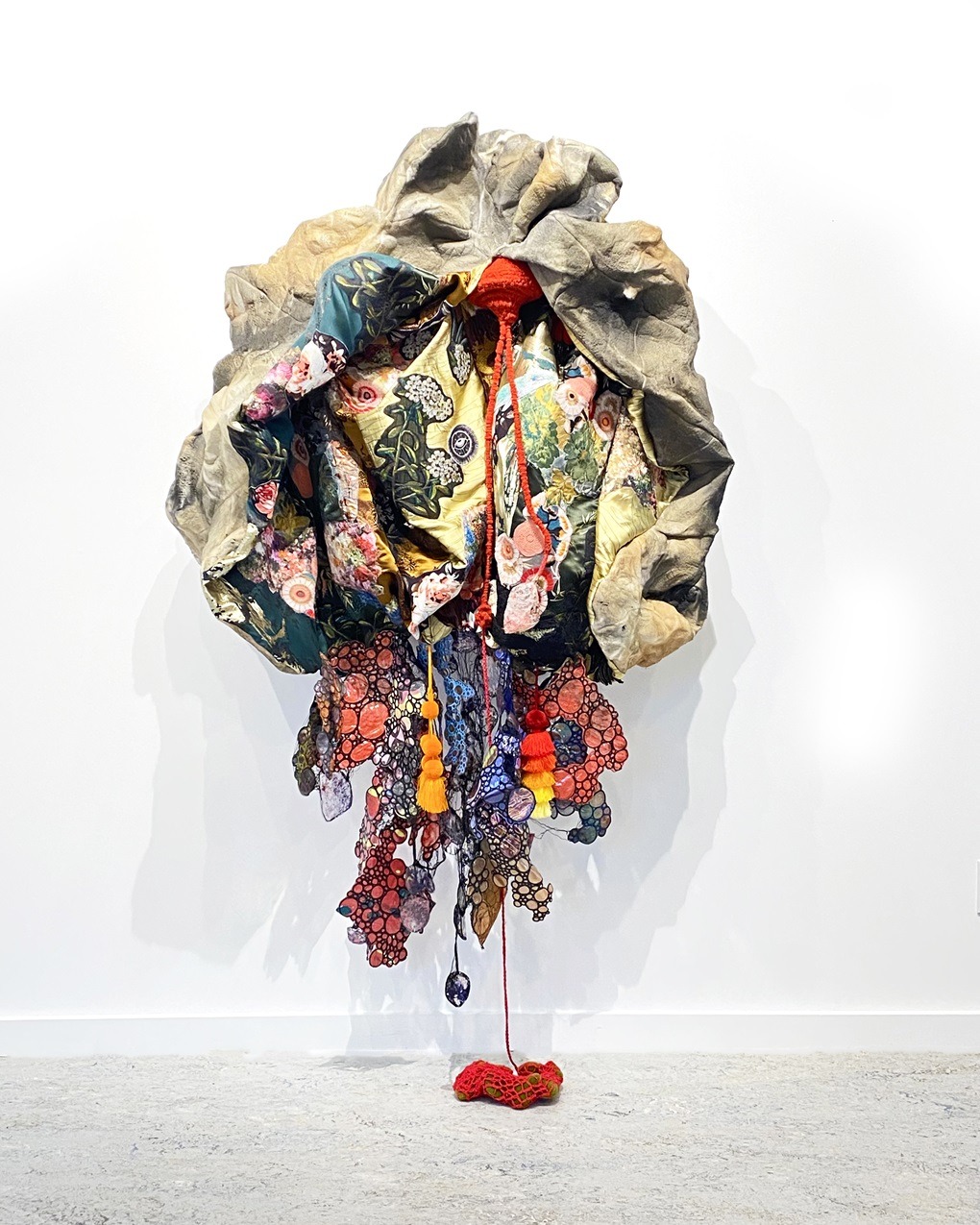
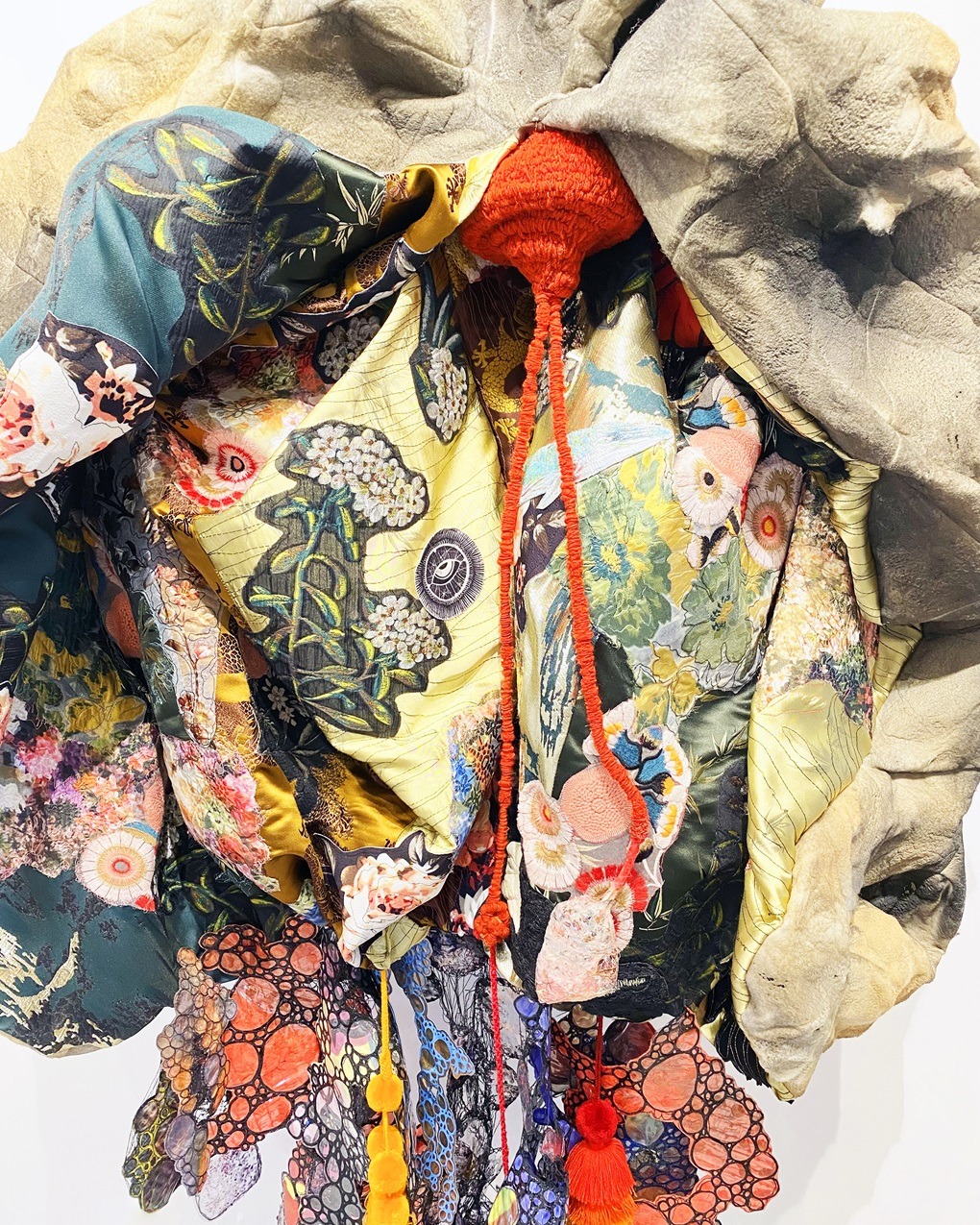
Shaped by ups & downs
I was probably subconsciously drawn to fibres as a very young child. Tactile things have always comforted me. I spent years in hospital due to my deafness. My mother would bring Barbie clothes she’d made for me, and I would finger paint in silence in the art room.
Although I do now have hearing in one ear, I prefer to work without auditory distractions. One illness led me to a weaving class when I was 15. Three days in, I knew I had found the direction of my career and the passion of my creative life.
My experiences guided me. I had huge medical challenges, parents who never understood me, growing up in Canada in a natural environment surrounded by farms, living on a lake, with the ever-changing, sometimes harsh and sometimes stunning beautiful seasons inherent to living in the north. Summer camp, a very artistic and talented sister and brother-in-law, teachers who eschewed and ridiculed me, important people who shunned me, and blue collar people who embraced me – these are the things that have moulded me in many ways.
“Dyeing and weaving paved the way for learning, growth and experimentation in fibres and mixed media.”
Leisa Rich, Textile artist
The cathartic ritual of weaving, the earthy ritual of communing with nature in the early 70s, while gathering plants for yarn dyeing, the meditative process of dyeing and the interesting sculptural elements from assorted organic materials all influenced my learning.
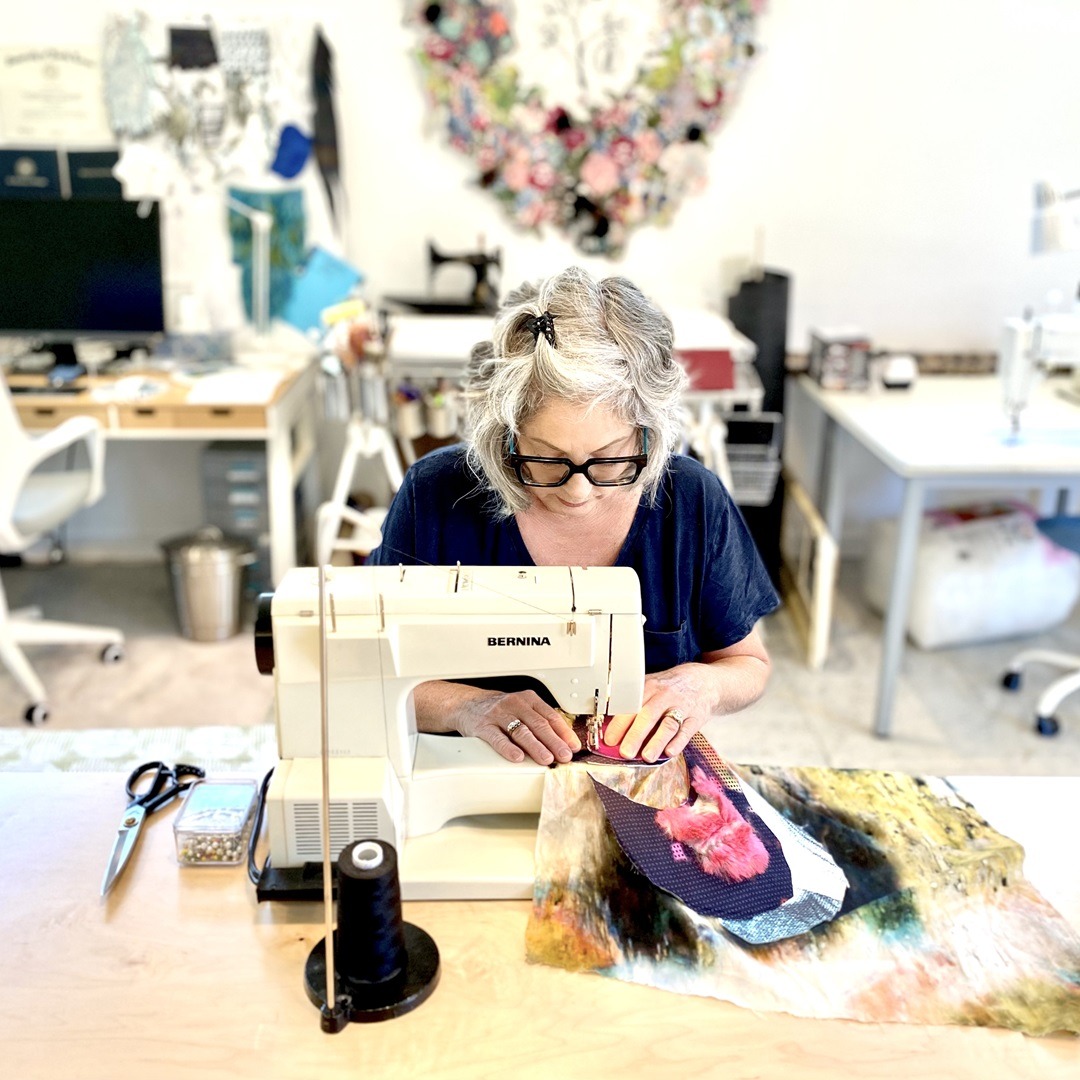
Moths & hippy artworks
My very first artistic influences were my sister and her husband. My sister was a talented artist with an MFA from Michigan State University. She later went on to graduate from MIT in architecture and is now an architect in Seattle. My ex-brother-in-law, a painting professor at Michigan State University for 27 years, painted professionally until his death in his 80s. Their house was an artistic springboard for me. The ethnic food parties they threw, attended by the art professors and deans of MSU, exposed me to wild points of view, exciting perspectives, creative ideas and the open-minded art world that abounded in the 60s and 70s.
I was also greatly influenced when, in 1976, I met and spoke with the Polish artist Magdalena Abakanowicz, a pioneer of fibre-based sculpture and installation, whose art practice I admire to this day. I made the work Venus’s Hair shortly after meeting Magdalena. This piece met its untimely death in the mid 1990s after becoming infested with moths and larvae. It was a demise common to thick, hairy, hippy artworks hung on a wall for long periods of time.
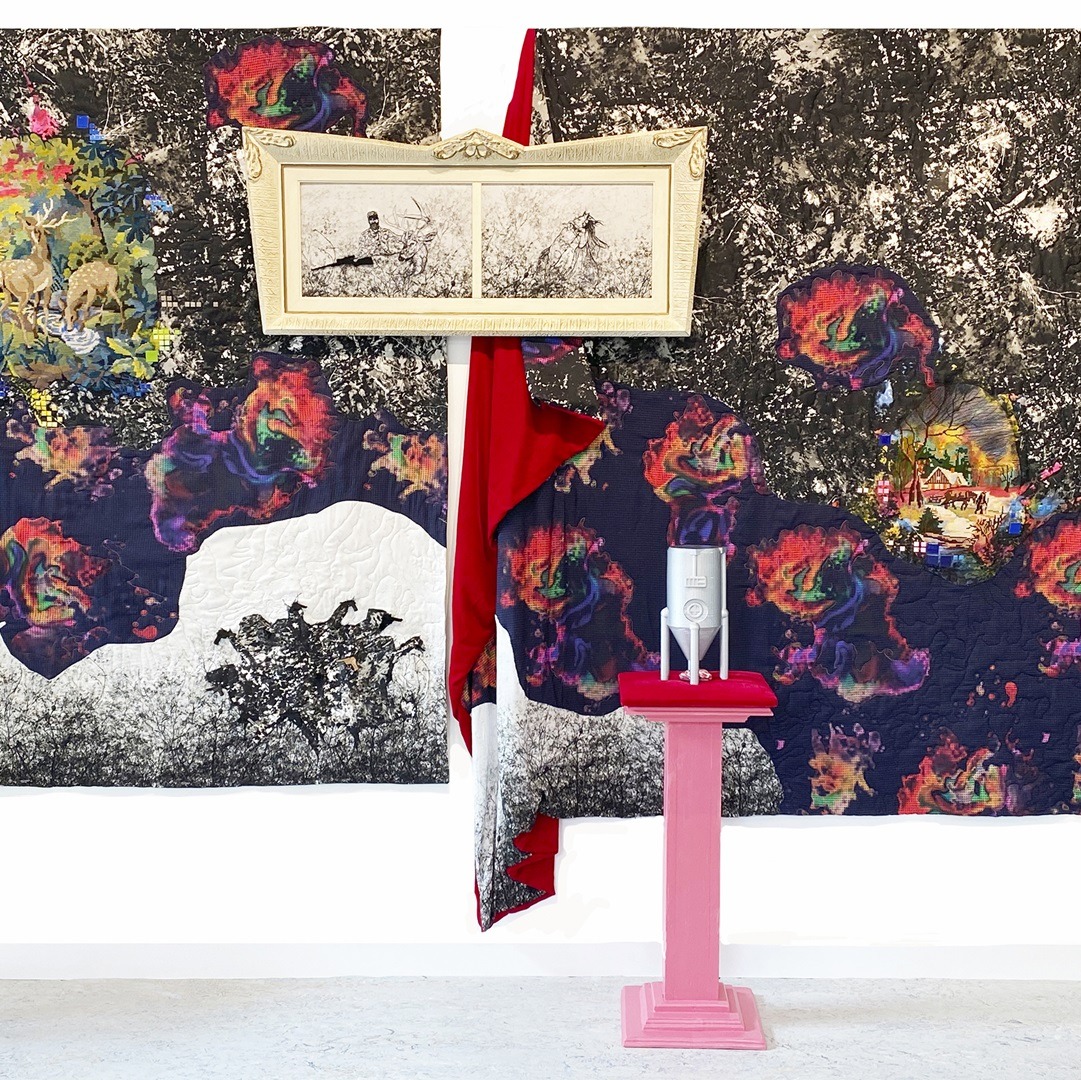
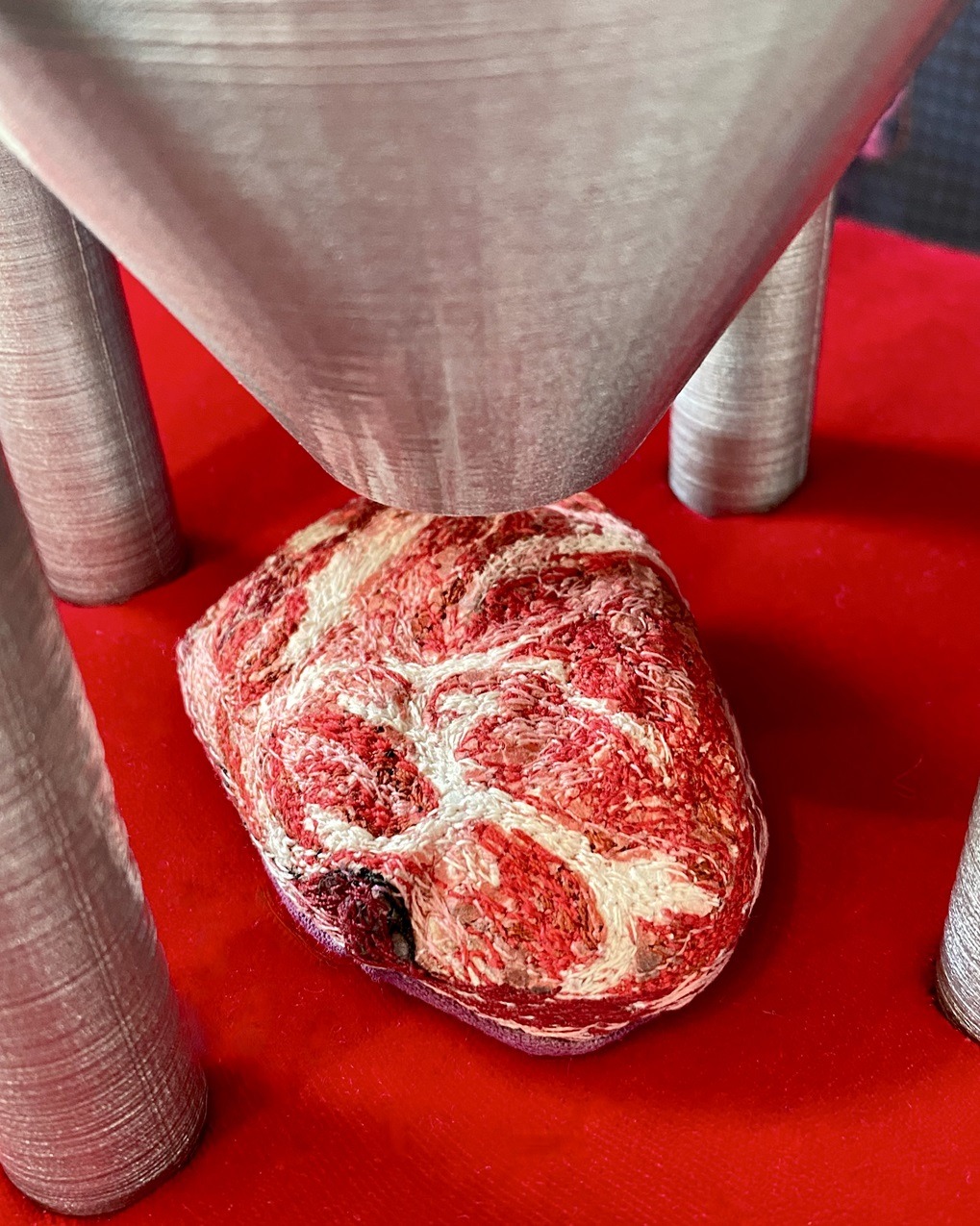
Overcoming obstacles
There are positives and negatives about who we are as people and as artists. All of it is fodder for ideas and direction. I’ve worked hard to turn these negatives into positives, and I still struggle to do so. Negative experiences in some people raise their hackles enough so that they rise above in spite, and thus it is in my case. When I was dealt deafness and numerous other physical challenges, I refused to let them get me down and I strove to overcome them.
“When my father said: ‘Why can’t you paint pretty pictures and make money, or get a real job?’, I ignored him and worked harder to be a better artist.
I drew on my love of nature and used it in my art.”
Leisa Rich, Textile artist
When I hung out with the university art professors at my sister and brother-in-law’s parties, I listened and learned from their artistic conversations and debates. When my famous fibre arts professor ignored me and focused instead on her talented, pet graduate students, I took university classes in other art school disciplines and learned invaluable skills.
I talked my way into a job as a knit, leather and fur designer in the mid 1980s for an international company and when the other designers refused to speak to me, the production staff taught me everything I needed to know, on their own time.
These are the influences I carry with me to this day. I’m not impressed with someone who is superficial or pretentious. Rather, I am impressed with their integrity, honesty, kindness and true interest in a fellow artist.
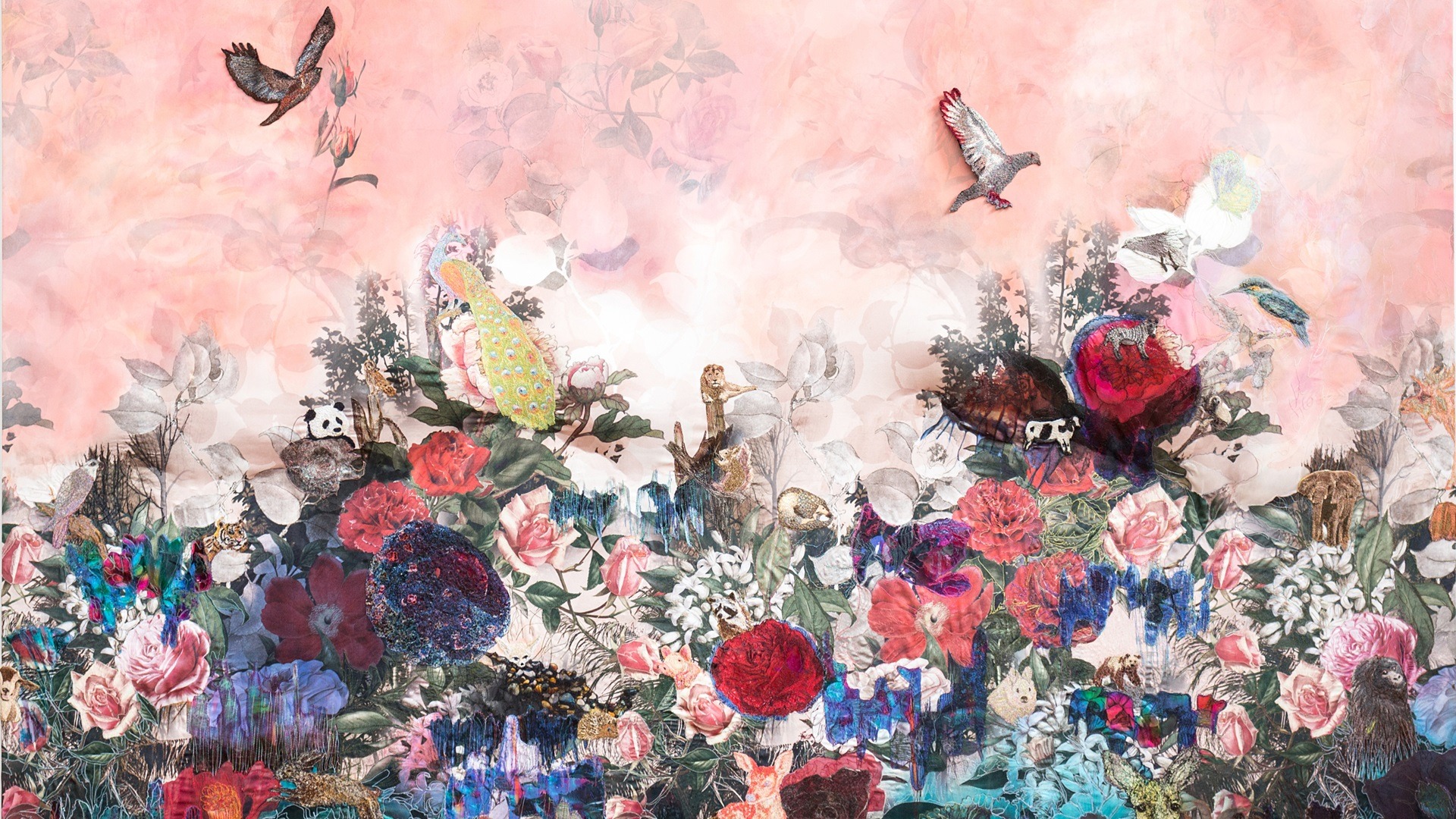
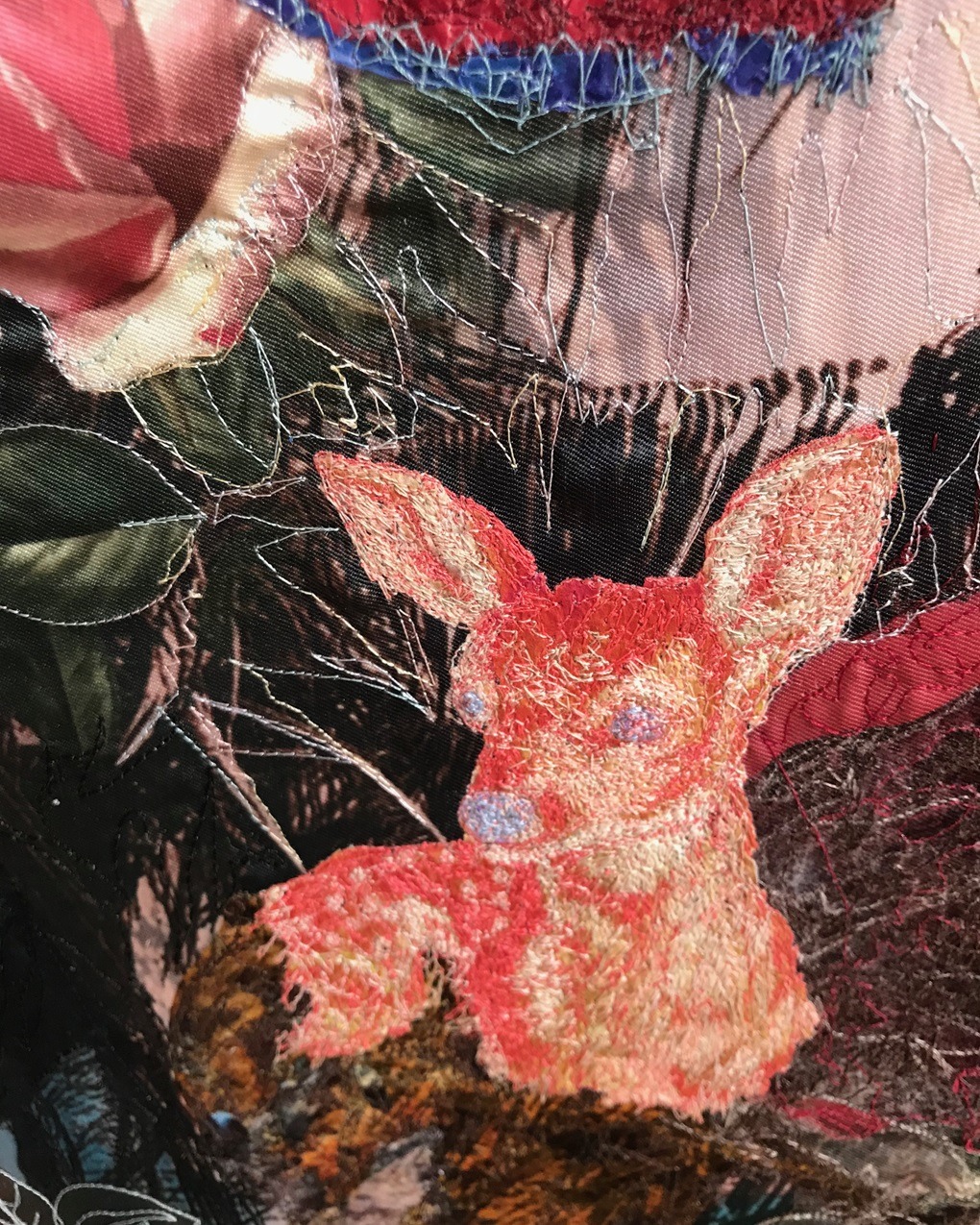
Globetrotting & growth
Although I spent my early childhood in the company of many professional artists who were connected to my sister and brother-in-law, it wasn’t until 1975 when I went to Interlochen Arts Academy in Michigan, that I took art seriously.
There, I specialised in fibres for 10th grade. I still have a little slip of paper from my public high school 9th grade art class that says: ‘Leisa has an affinity for art’. That teacher must have seen something in me that I didn’t really discover until the following year.
I returned to Canada, my country of birth, to attend the Nova Scotia College of Art and Design in the fall of 1978. Unhappy with its programme, I took a semester off, then attended the University of Michigan, studying for a BFA in Fibres.
I ended up using my art degree to do fashion design for a number of years, first with Norma, an international fashion design company based in Toronto. While at Norma’s, I got married and had my first daughter. I then started a business on my own, creating wearable works including sweaters, hats and jewellery that were worn on prominent television shows and featured in magazines.
I have always taught, so I decided to return to school for a teaching degree in art, while running a full-time business and raising my daughter, which I completed at the University of Western Ontario Althouse College of Education.
I had several moves from Toronto, Ontario and Vancouver, British Columbia to Kauai, Hawaii to Dallas, and from Texas to Atlanta, Georgia. We decided to sell off everything we owned to travel around the world.
We covered England, Malaysia, Indonesia, Australia, New Zealand and Tahiti. All of this travelling, with my husband and six-year old daughter thrown in, means I’ve had many diverse experiences and influences studying the art of many cultures.
We later had another baby, and while teaching part time, I returned for my Master of Fine Arts in Fibres at the University of North Texas, graduating in 2007.
“I have always had my cake and eaten it – what you can conceive of can become reality if you put your mind to it.”
Leisa Rich, Textile artist
I want to encourage those who hesitate about going back to art school to go for it, if that’s what will nurture and further your creative experience. During all of this moving and travel I always worked part or full-time and raised two daughters. I love going to school and learning.
If I could, I would continue my education in various programmes, as the professors and fellow students encountered in an institution of learning always inspire me and help me creatively grow.
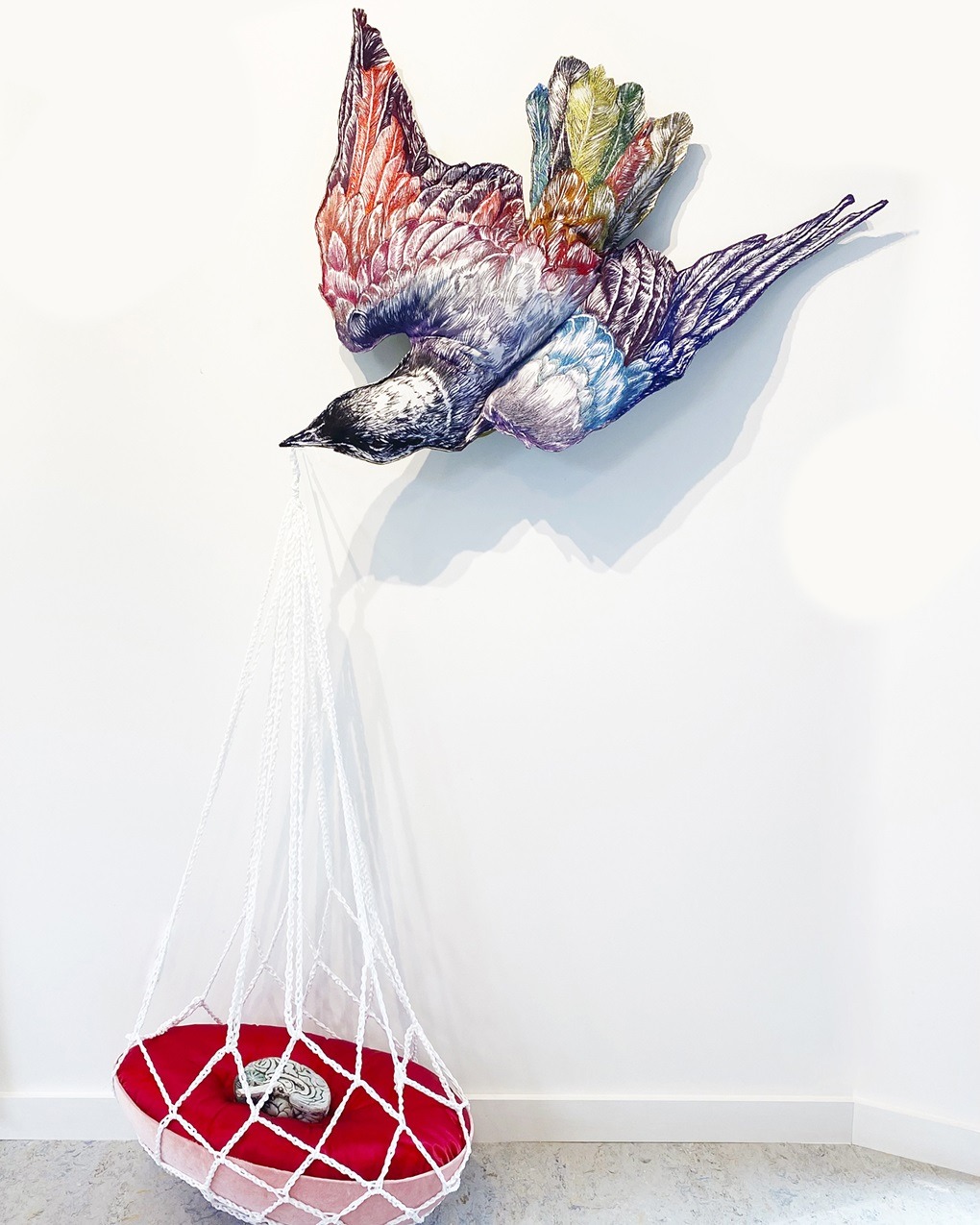
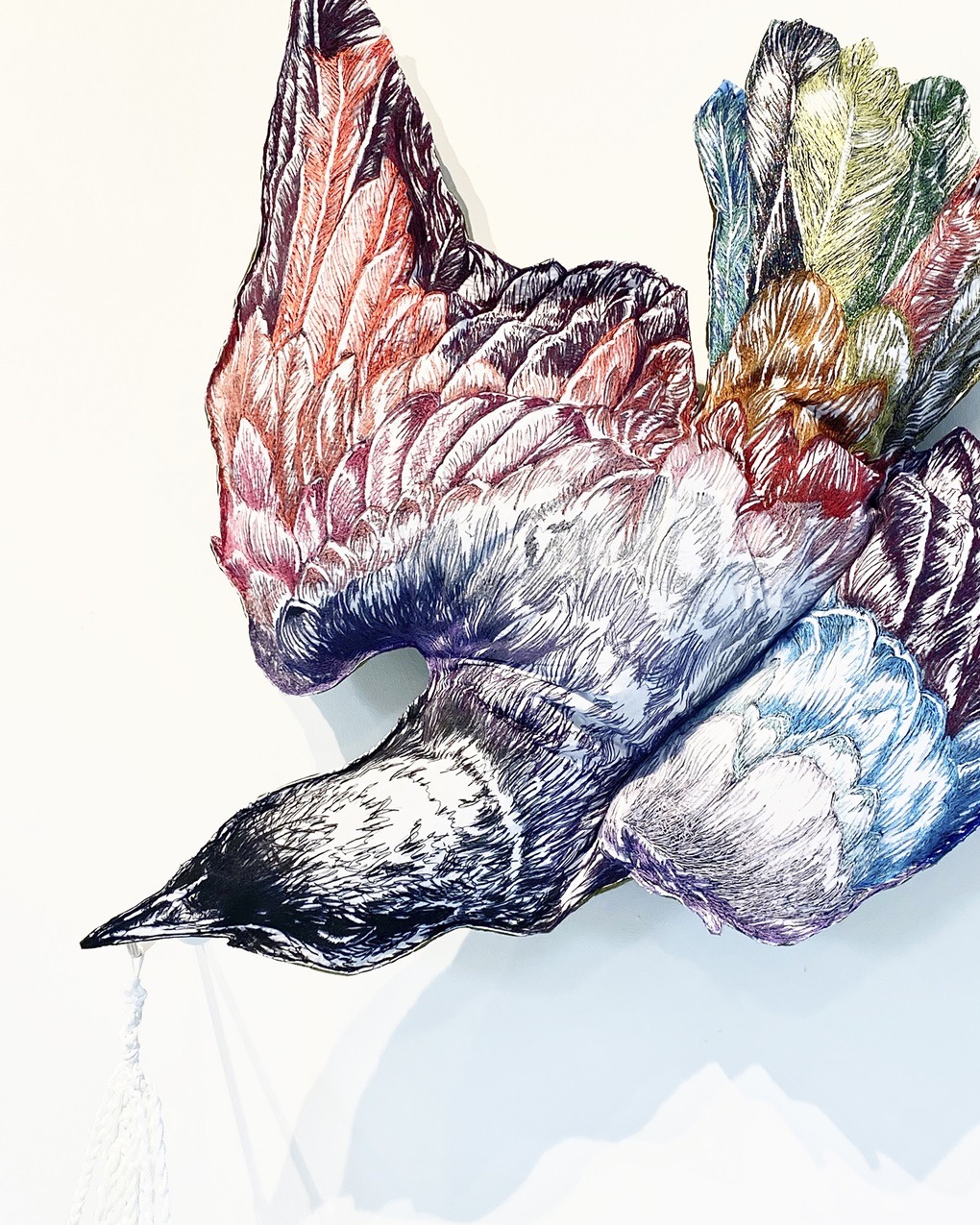
From Facebook to fabric stores
My work has got better both technically and conceptually as I’ve worked, researched and practised.
I’ve found Facebook – yes, Facebook – to be a huge inspiration for ideas and research. Things posted there led me to do research in areas I might never have been exposed to, such as new literature that’s just come out.
This includes art books, research papers on art, technological advancements, TED Talks on a variety of subjects, art, artists, exhibitions, art-related ideas, information about environmental issues that are important to me as a vegan, individual discussions about politics, and food.
These have led me down wonderful, and sometimes frustratingly difficult-to-navigate bunny holes. I’m a very sensitive person and my heart is poured into my work.
When it comes to developing my ideas, I’ll sketch if I need to, but I’m really a 3D person and don’t enjoy paper and drawing implements. My sketches are the million ideas fully formed in my head, so many that if I lived a thousand years I wouldn’t be able to create them all.
I have a great stash of materials of all kinds in my studio. What I use really depends on what I come across. For instance, I recently noticed a really crazy, distressed fabric at Fabricland, near my home. No one was buying it, so it was discounted to $6 a metre!
I bought four metres of the off white and brought it to my studio. By the next day I was back at that same store. I bought everything they had in the off white, as well as a minty green, a flesh pink, and a blue-black. What am I going to do with 40 metres of fabric?
That’s often how it works… I will see something, buy it and, for sure, maybe an hour later, or three months later, or even 15 years later, a fully formed idea will pop into my head for it, and the process of realising it begins!
“Since I’m so experimental, everything is always changing. I’m always pushing materials, explorations and learning new techniques.”
Leisa Rich, Textile artist
I struggle sometimes with my need for experimenting, in an art world that keeps telling me to stick with one thing and only one thing! However, when I try to be anything but what I am, I’m desperately unhappy.
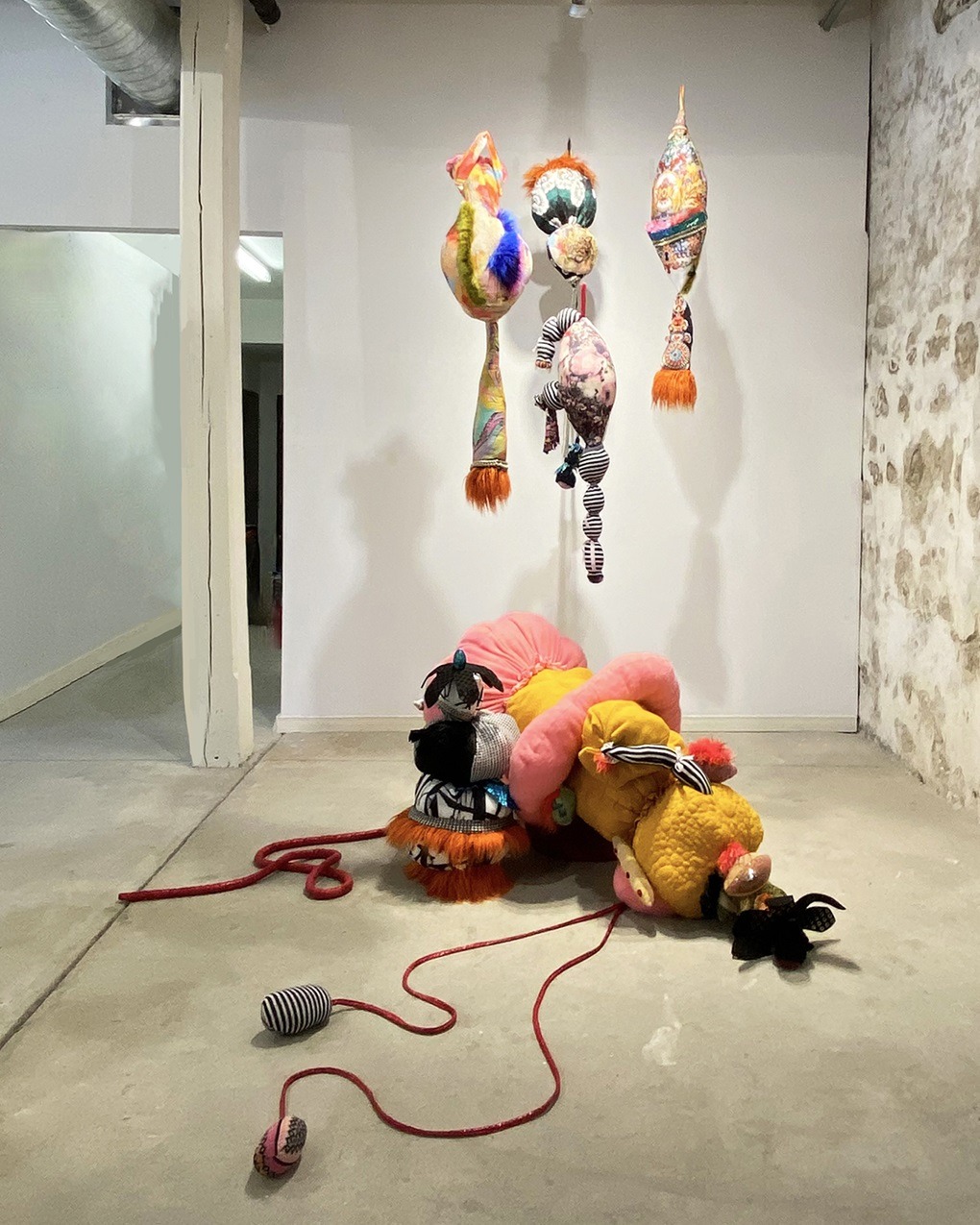
Harnessing artificial intelligence
I’ve always incorporated multiple methods and materials in experimental ways in addition to free motion embroidery. But as I’ve got older, I’ve experienced carpal tunnel syndrome and arthritis, which has meant I can do less handiwork.
So I purchased a 3D printer some years ago. It means I’ve been able to combine fibrous materials and processes, along with plant-based biodegradable plastics to form new art pieces.
I’ve also added AI (artificial intelligence) and laser cutting on a Glowforge machine to the techniques I use in my work.
I’m approaching the utilisation of AI in a much different way than the methods used by many 2D artists though; I provide my name as a prompt (it’s been trained on my data – that was really weird to find out!), as well as suggested textures, and the AI gives me plenty of visuals I can choose from and work with.
I use the chosen image to create pieces that go through my laser cutter, which works with a variety of materials such as wood, reflective or shiny plastics, even fabrics. I’m just at the beginning of this type of exploration, but the AI images generated from this so far have been super exciting!
The first thing I fully used it on is an elaborate neck piece for my WOW (World of Wearable Art) 2024 entry. I’m going to be focusing soon on pushing the envelope with textiles in the laser cutter.
My husband is my techie god, and we are both making sure we know how to use the cutter at its optimum before committing to fabric – with textiles if you put the wrong one in you have yourself a fire!
My home is an ever-changing showcase for my work. I know when something is a favourite when I realise I don’t want to sell that piece, like my monumental work, Father, Son and Holy Ghost (2021).
It’s taken up permanent residence in our master bathroom, and we chose the dramatic wallpaper to set it off. This work is from the body of work I’ve been making since my move back to my home country, Canada, in 2020.
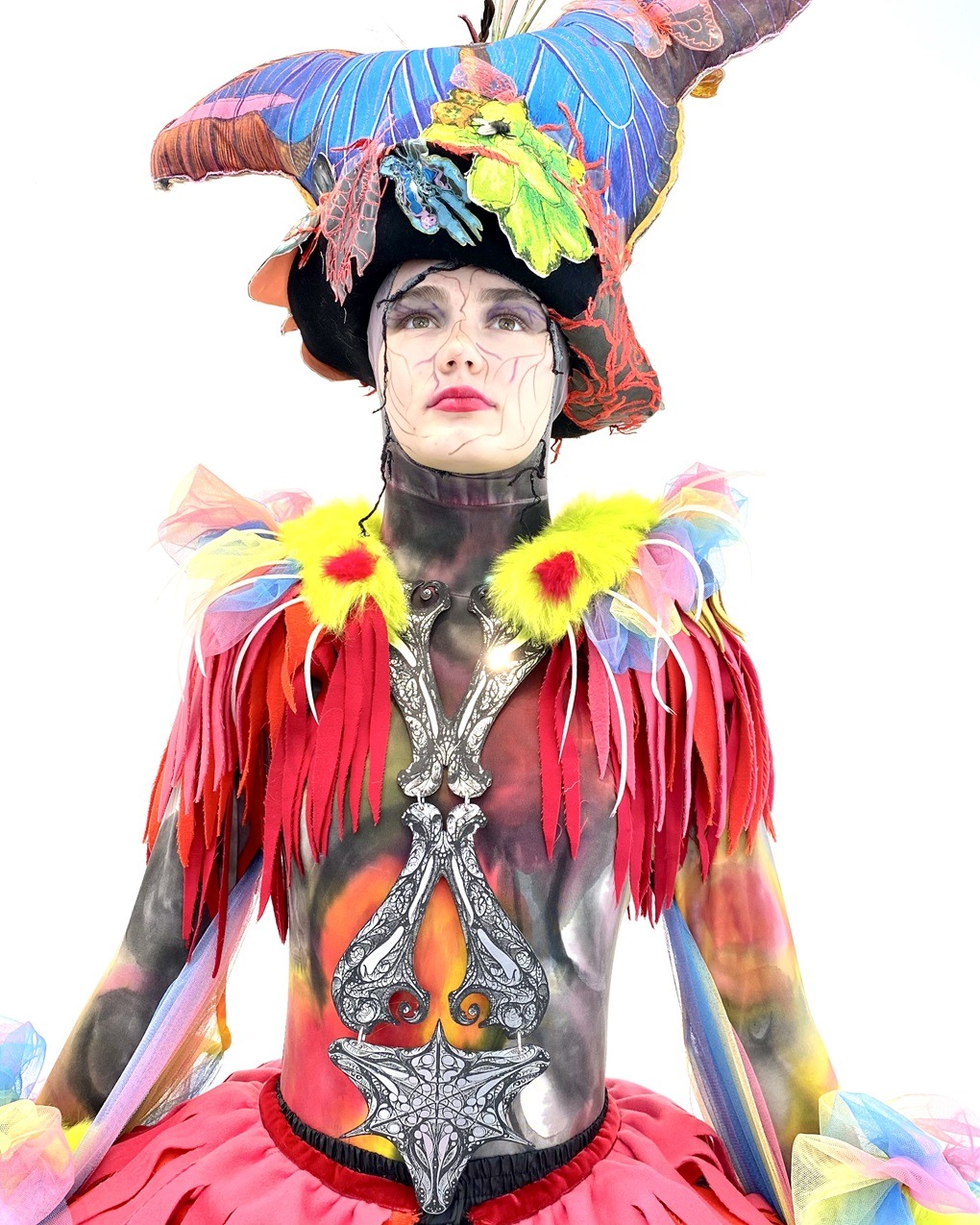
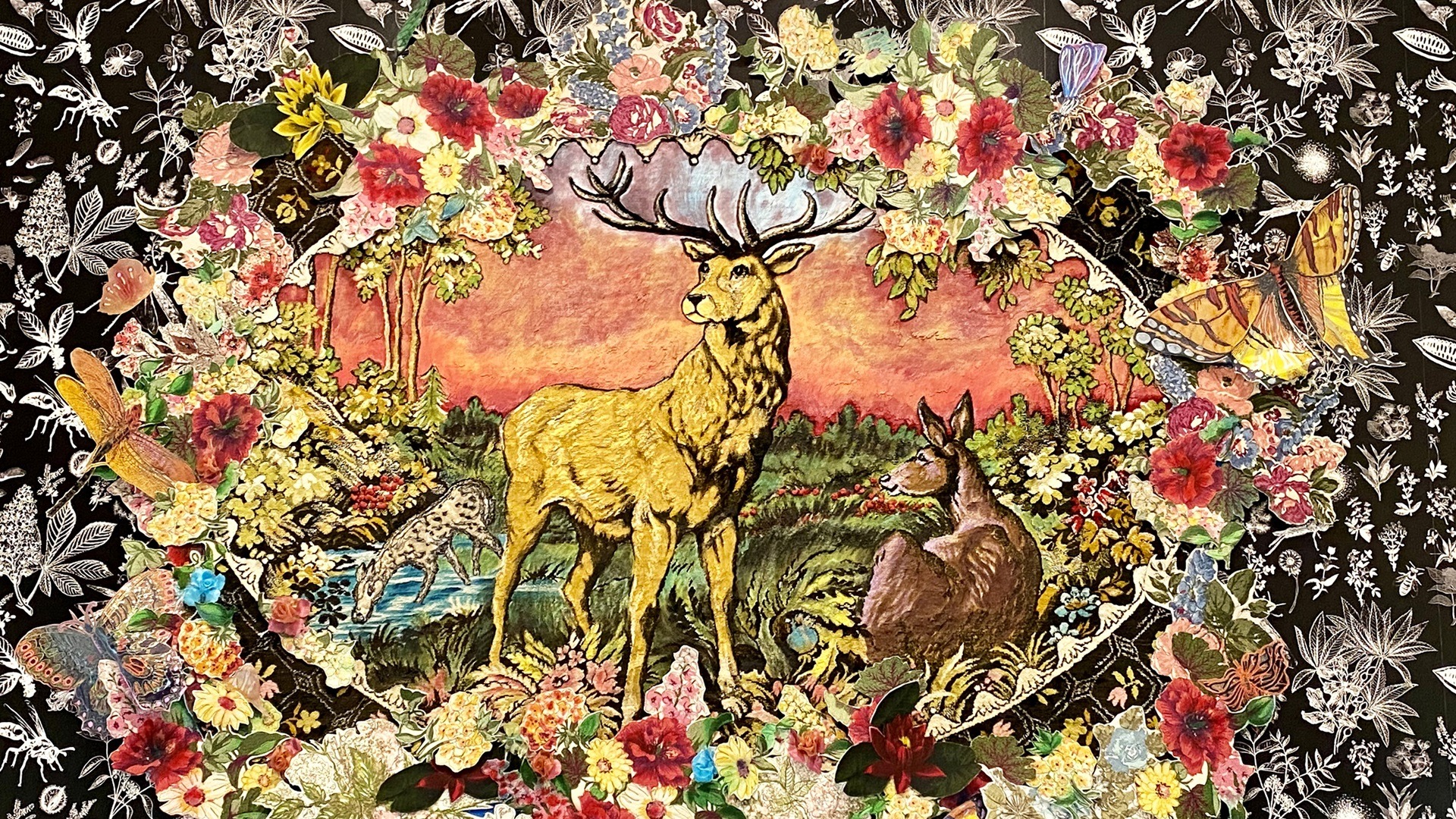
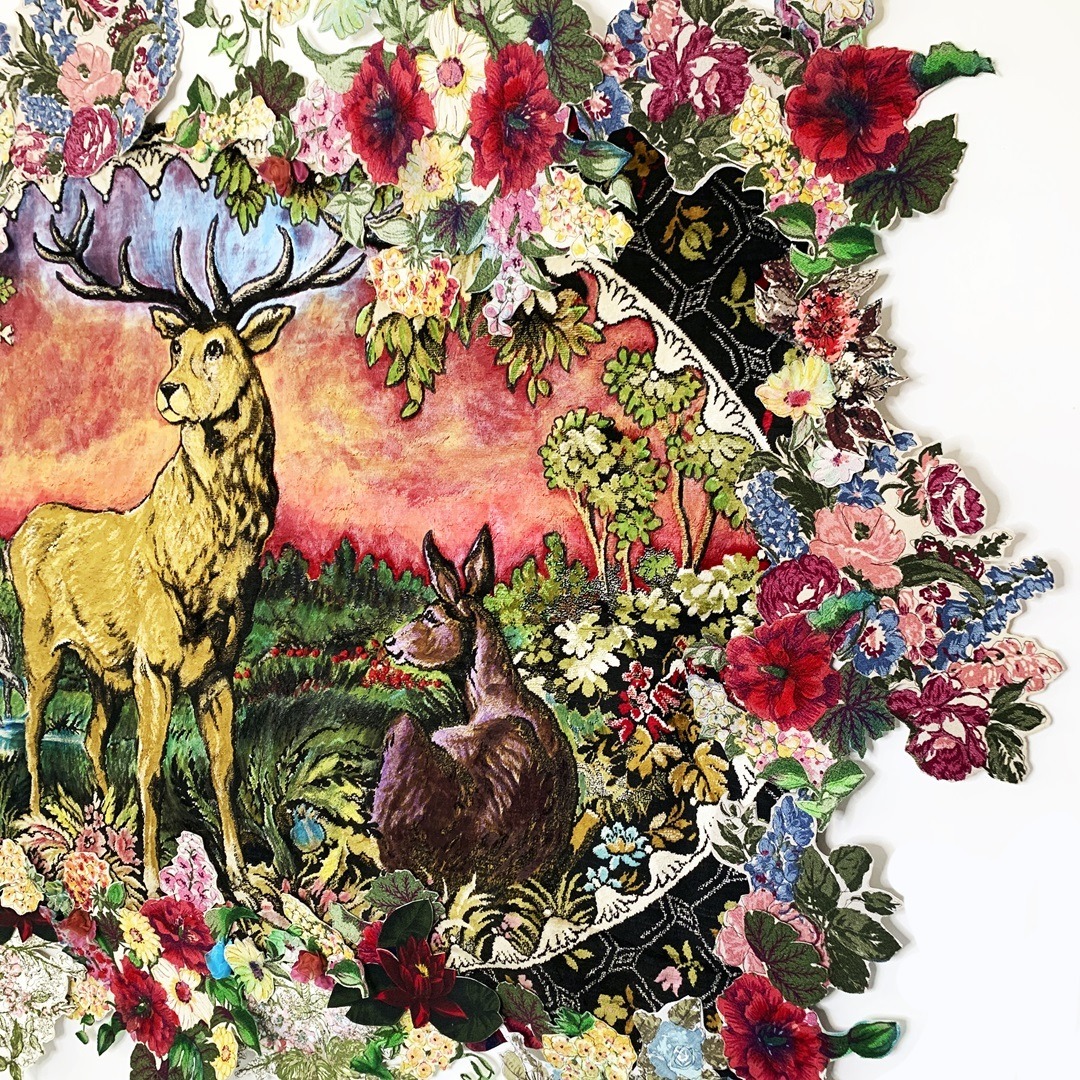
A rewilded life
Now that I am in my mid 60s, first and foremost I must make my health a major priority. While my ideas and creative passion are still young, physical challenges that come with being an ageing artist have reared their ugly head and it can be scary.
I’m still searching for the holy grail: the dollars, backing, assistants and opportunities to realise very large-scale installations. And I want the plethora of ideas I have, and my prolific production of works, to be put to good use in amazing spaces, as well as selling my smaller works. I still want to travel more and to become a more knowledgeable vegetable gardener.
When we moved back to Canada we bought a 100-year-old farmhouse with over three acres of land on Howe Island, overlooking the beautiful St Lawrence River near Lake Ontario. It’s very quiet and only accessible by ferry.
We’ve been rewilding it, which included returning most of the mown property to wildflowers and trees, removing all fossil fuels, installing geothermal and solar energy supplies, and adding structures that use the green building concepts from the Leadership in Energy and Environmental Design (LEED) certified architecture system.
It’s a haven for white-tailed deer, coyote, fox, mink, birds, bugs and many more creatures. We labelled our property ‘Safe Zone’ as we also don’t consume animals or animal products.
“This move to a wild place, with no doctors, no retail, no street lights even, has meant I’m very attuned to nature’s rhythms.
My recent works have reflected that.”
Leisa Rich, Textile artist
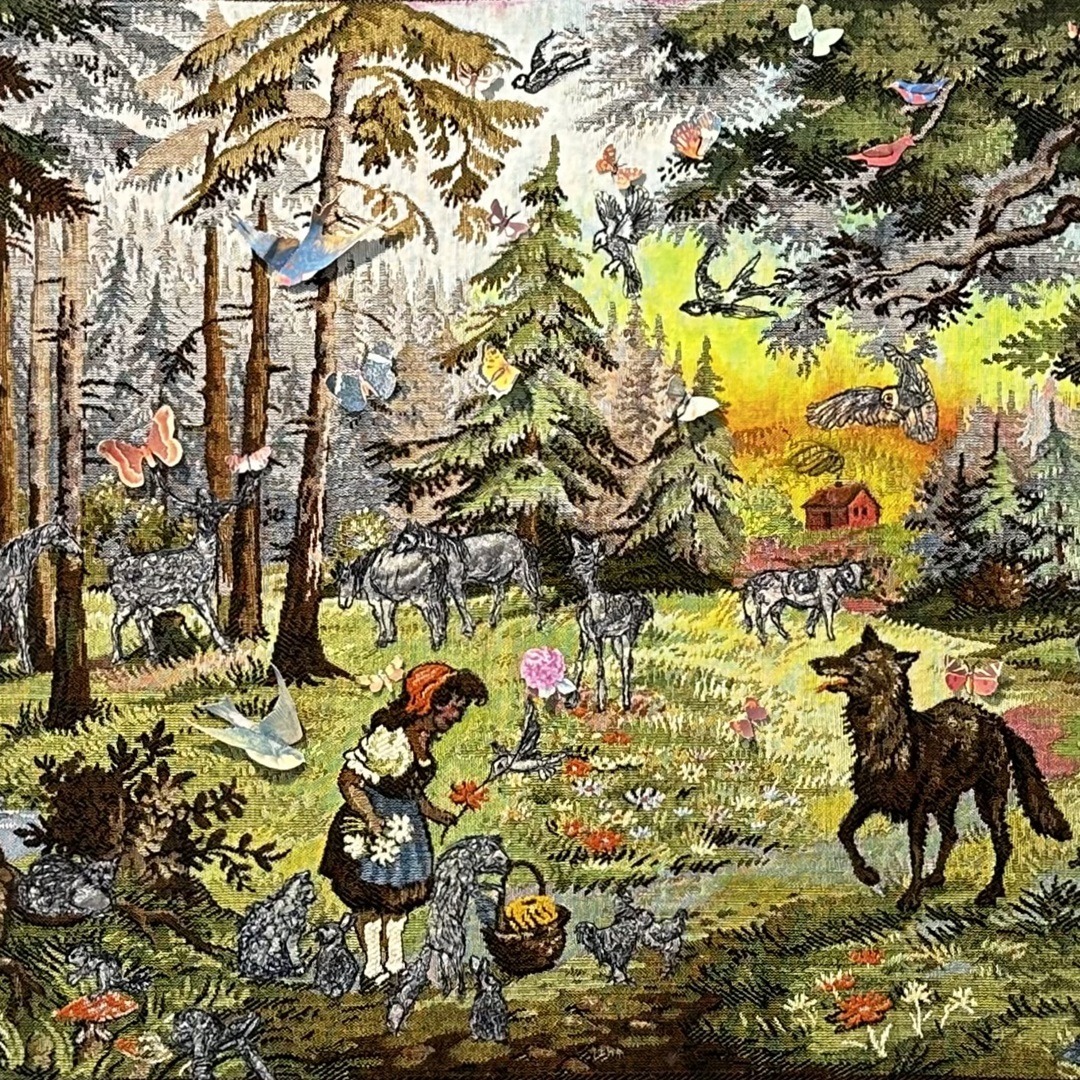
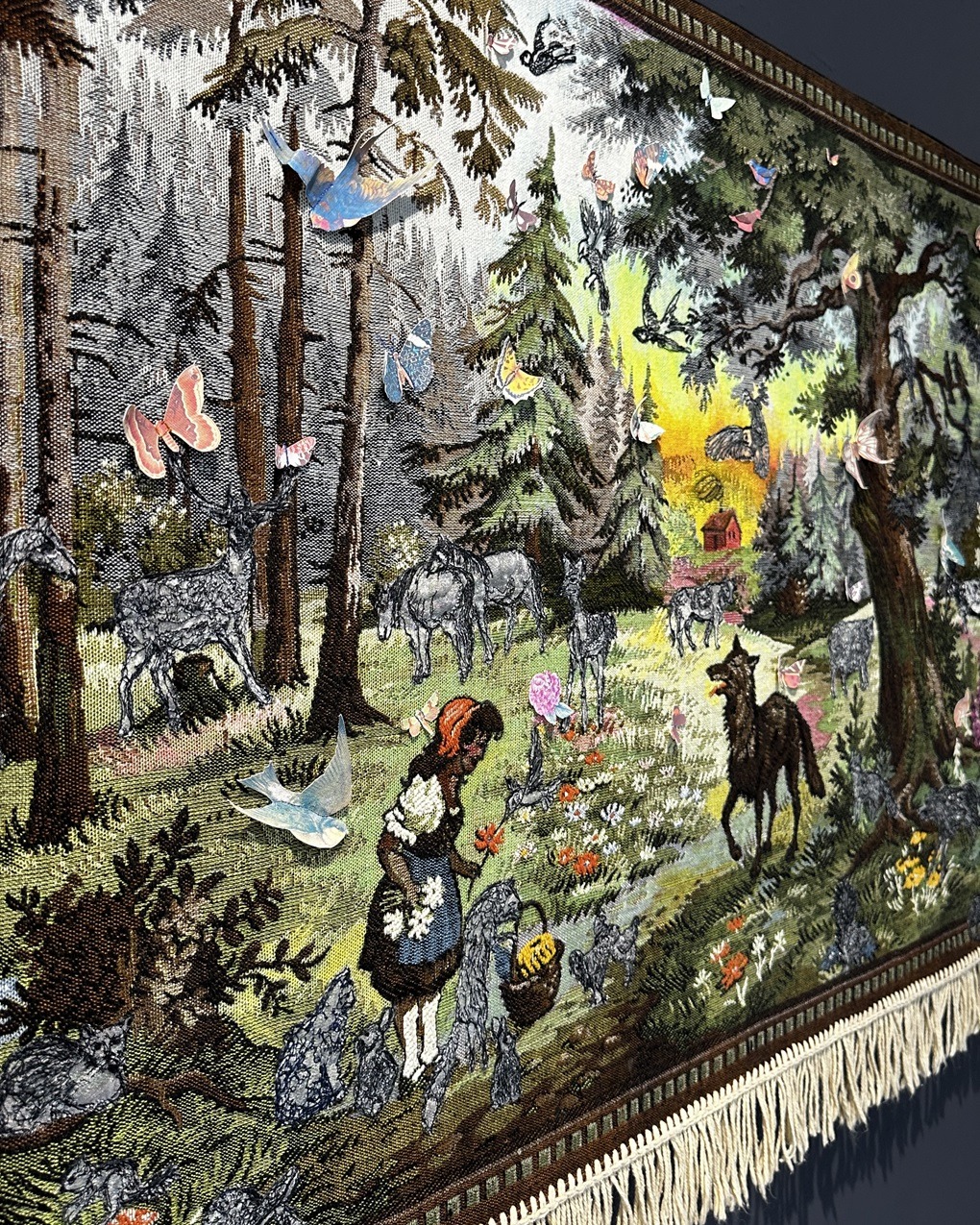
Supporting role
I’m excited to tell you I have a gorgeous dream studio – finally! When we extended our house, a studio was included in the plans. It’s 1000 sq.ft, with 16ft (5m) high ceilings and pro-track lighting, and can be configured as a gallery, workshop or event space.
In summer 2023, we established a foundation for fibre artists and welcomed our first resident artist from the Textile Museum of Canada. Artists live and work on our property, and have access to an outdoor studio, as well as working with me in the indoor studio.
Future summers will see more sponsorships, scholarships, and residencies supported by me and my husband, in association with Craft Ontario, The Textile Museum of Canada, and Contemporary Textile Studio Co-op, based in Toronto. All the details are available on their websites.
The co-operative is a four-month programme so either for people who live in Toronto or those who can stay there for four months.
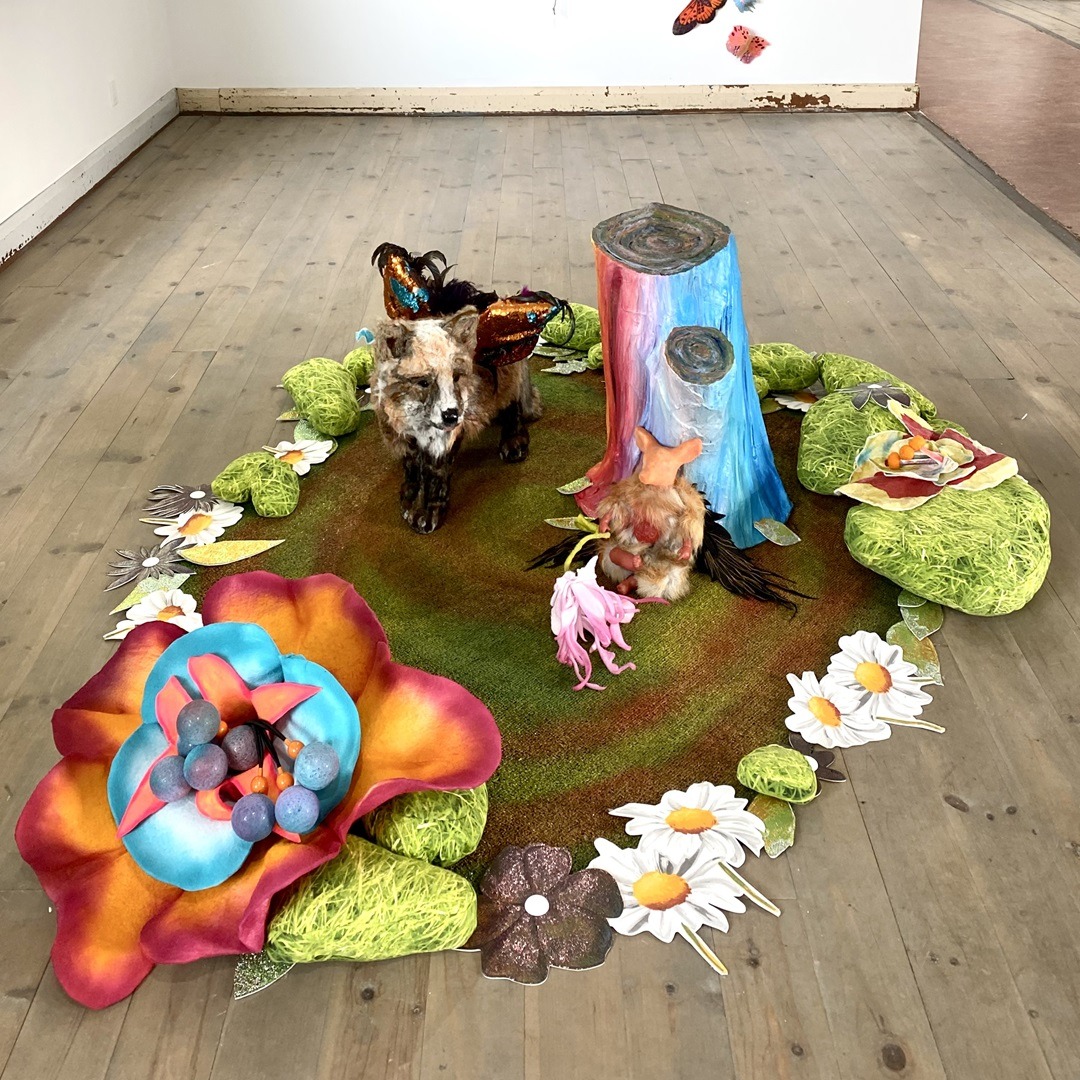
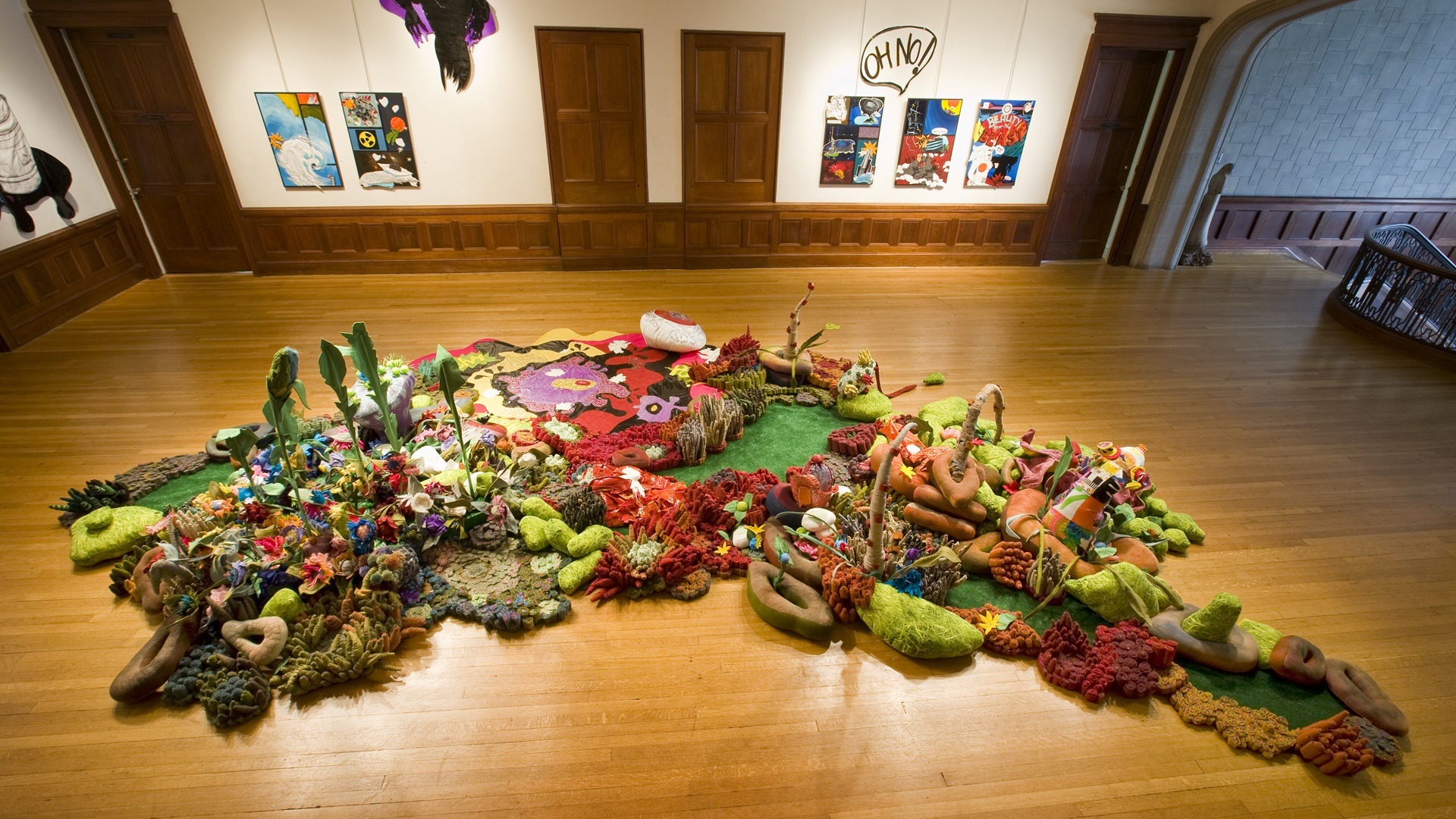
Educate for the future
This is a really weird time to be an artist, with AI radically changing the way art is produced. I fear for 2D artists, who are already facing a time when the validity of their original art will be questioned.
Perhaps their work will no longer be sought after, since others will be able to make their own ‘great art’ right from their computer and phone. This is a very volatile scenario… we’ll have to see what happens.
“Textile artists have a brief respite from that right now, since our work is tactile and dimensional and presently impossible for AI to do… but that time will come.”
In the future, robots will receive prompts from the AI and dye some yarns or weave some cloth, print fabric, or build sculpture. I would suggest that aspiring textile artists become aware of technological changes coming down the pipeline and figure out in advance how they can adjust what they do in order to deal with that.
And – the advice I give everyone – gauge your impact on the environment. If you’re doing plant dyeing but eating animals, your contribution to negative climate change is larger than your positive impact is from choosing organic working materials.
“Awareness and educating oneself will be the most important skill in this new vista.”
Leisa Rich, Textile artist
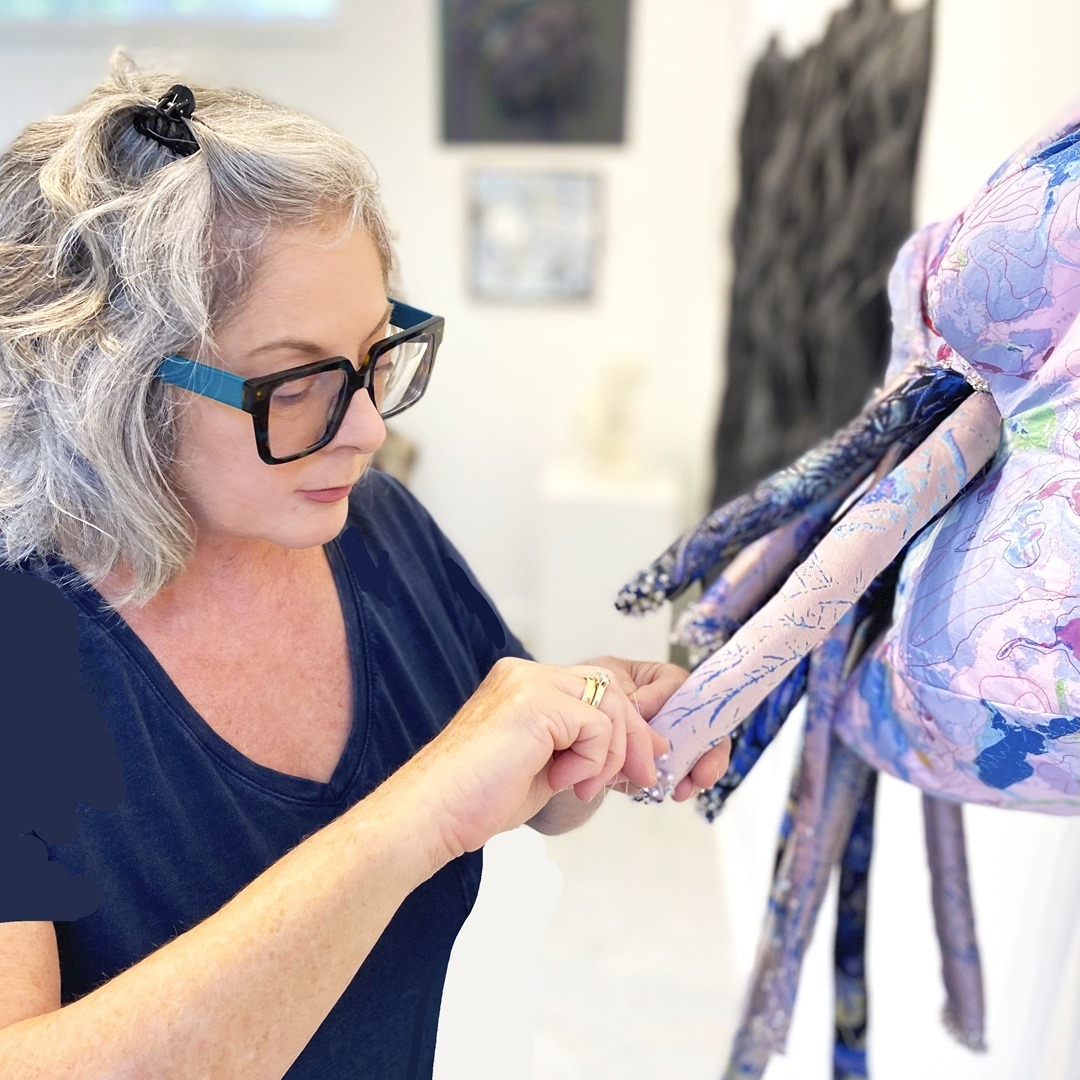
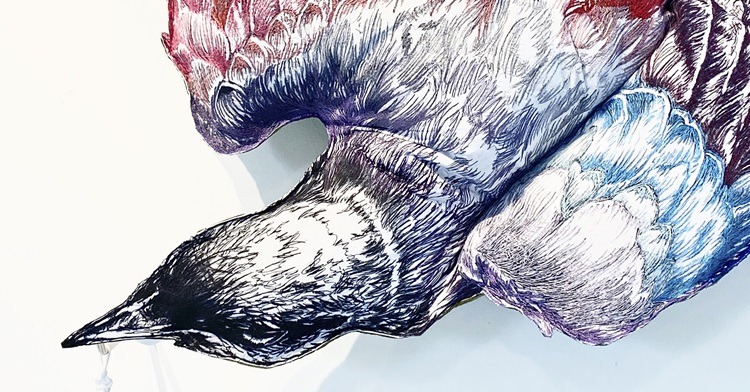

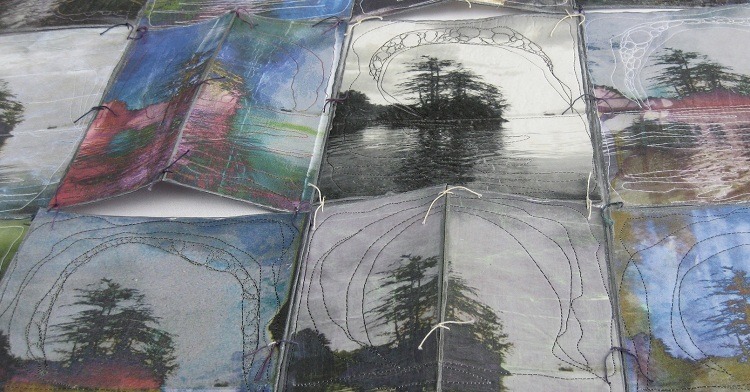
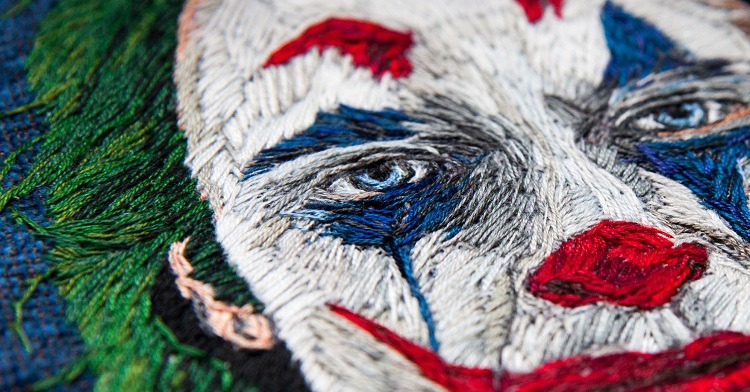
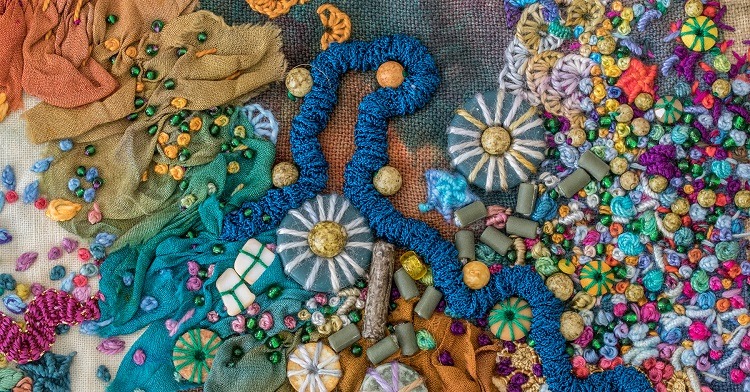
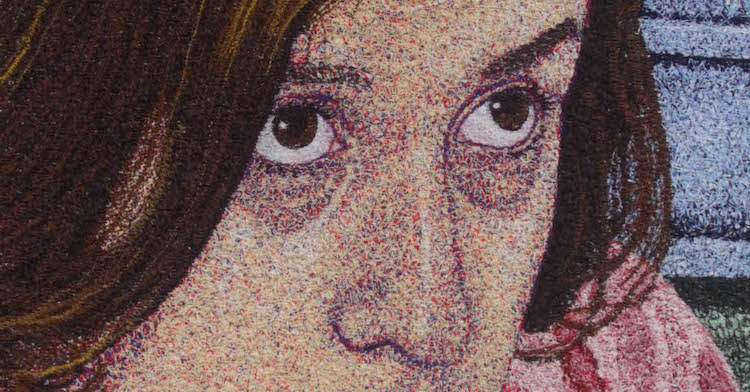
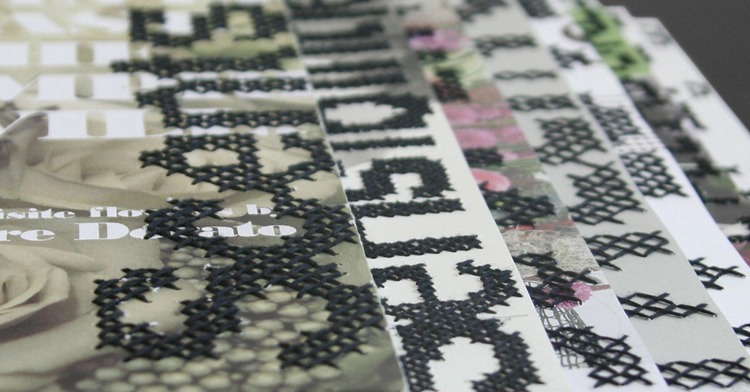
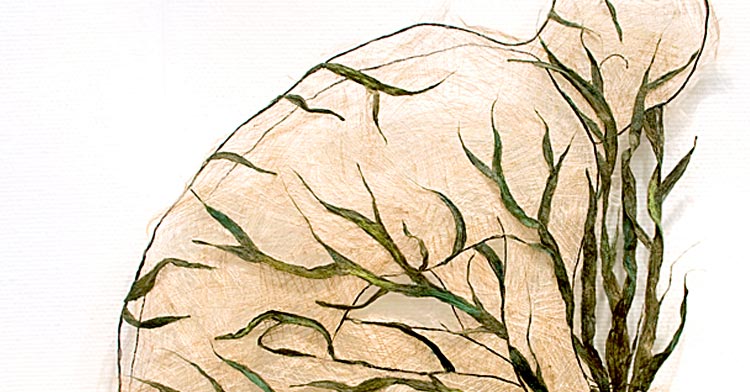
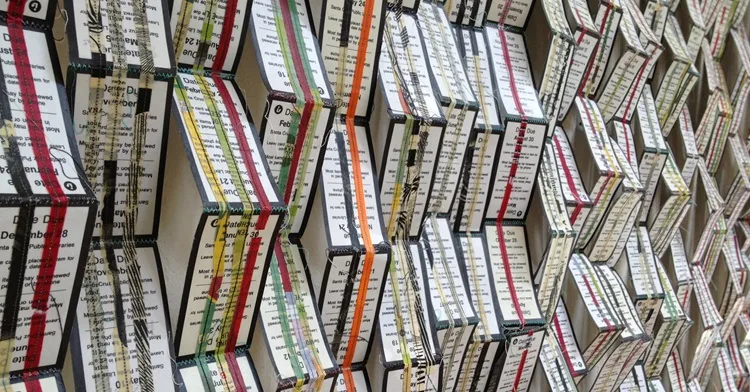
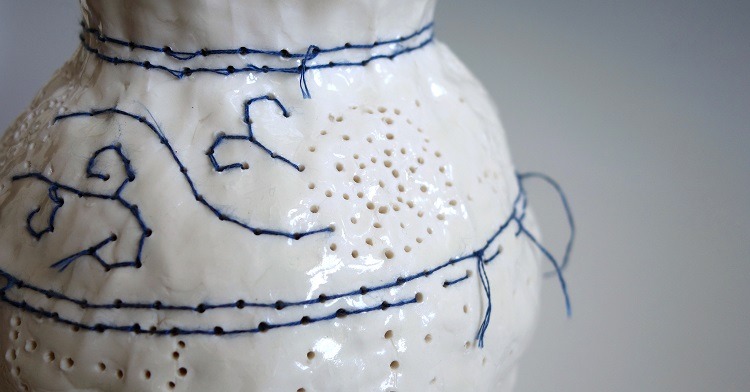
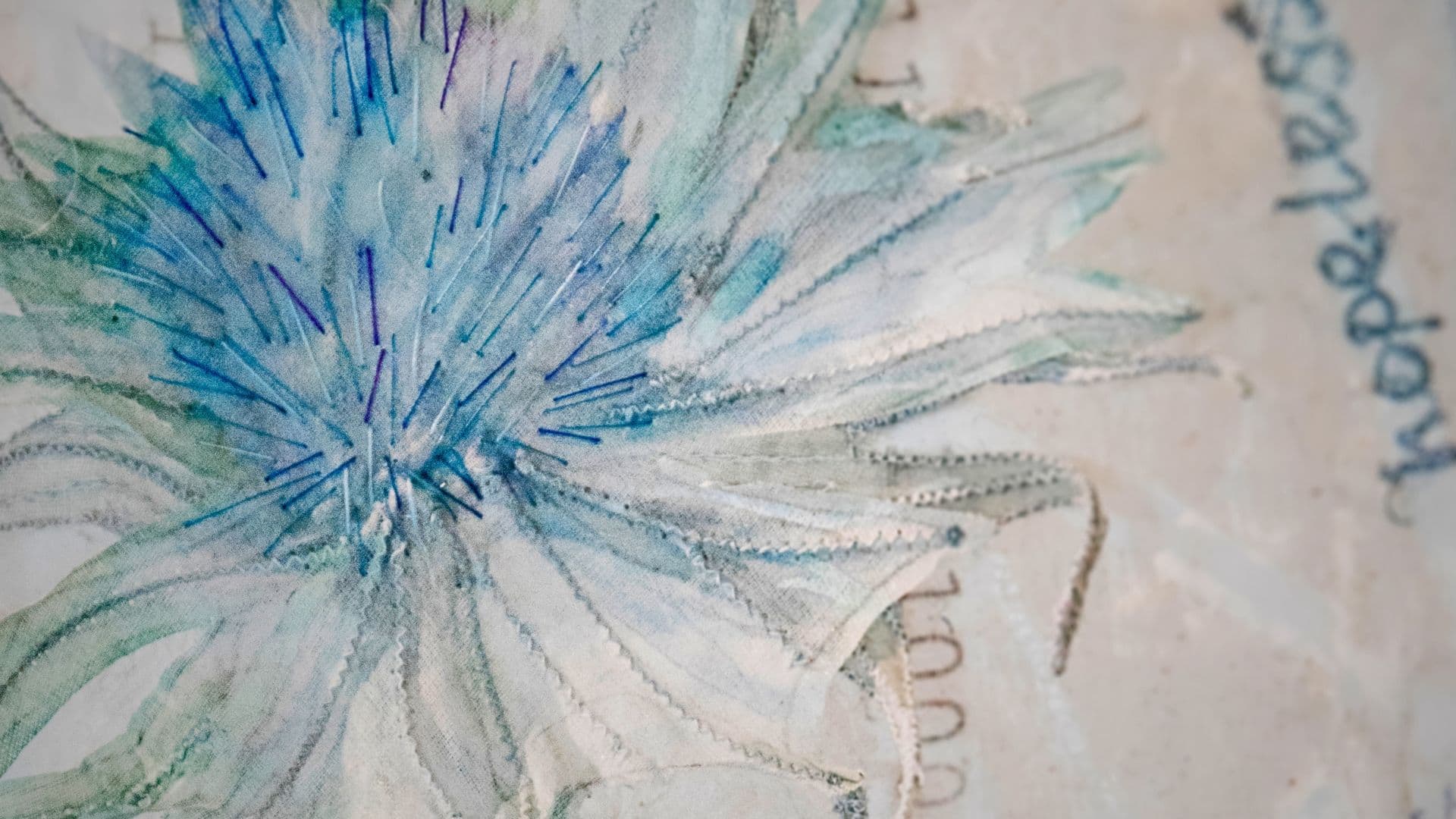
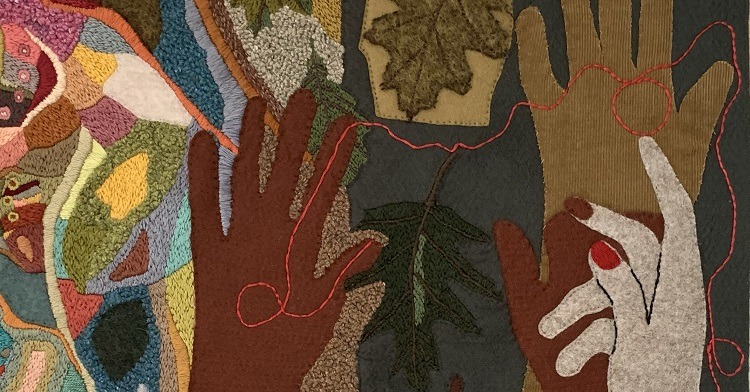
4 comments
Leisa Rich
Thank you so very much for featuring me! This is the most comprehensive article written about me, and I and thrilled at the comments.
Siân Goff
We are all so happy to hear this, Lisa! It is such a pleasure to feature you and your incredible work. Team Textile Artist.
Seymone Armstrong
Absolutely a lovely piece on Leisa. I have met her and have had the pleasure of viewing her amazing creations at the Melt Studio, Picton, Ontario, Prince Edward County. The textures of her work are something to see. What a creative brain!
Siân Goff
Her work is exquisite, isn’t it? You’re so lucky to have seen it in real life! Thanks so much for your comment.